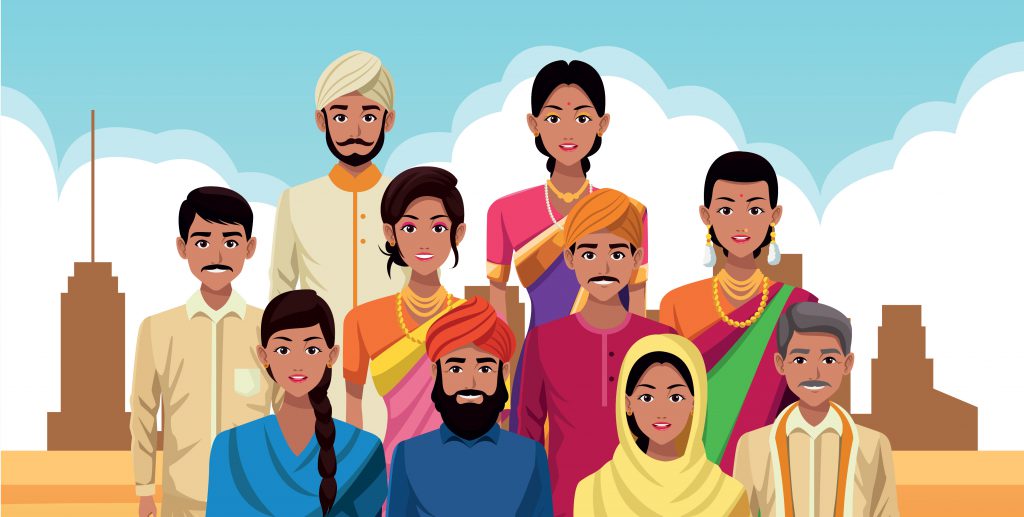February Activity – Digital Safety and Security – My Digital Footprints
Introduction
We all are aware of usage and advantages of internet these days. We frequently use internet for online classes, connecting with friends, family, sharing messages through what’s app, using different apps to sale and purchase things, banking, online games etc. It is now a process which we all follow without thinking much about its harmful effects. We all share some or other messages and many times we share/forward messages which we think is funny and harmless for anyone.
Many of you or your friends, siblings or parents must be having social media apps like Facebook, Instagram, Twitter, Snap chat etc. where they have created their own profiles before using the same. We do not think much what information we are sharing there? How much we need to share? How can strangers see our profiles? How any unknown person or hackers will use this information?
Through this activity, let’s encourage our ACTIZENS to think more about these things so that they can think before creating such profiles in social media apps or other useful apps.
Keywords: Digital India, Digital Safety, Digital Security
Steps for the activity:
Step 1 - Game
- Start the class with 1 fun activity. Display the logo chart in your online class/ take print out of the Logo chart and display it in your classroom.
- Give 2-3 minutes time to students to look all logos displayed and identify the logos.
- After 2-3 minutes close the logo chart or put off the chart from wall/board
- Ask students to make a list of logos they identified on the chart and name them in their notebooks. Give them 5 minutes to recall and note the list.
- Ask few students if they can identify these logos or not, how many of them have identified all?
- How many logos are familiar to you?
- Have they used these apps ever? Yes/No and for what purpose?
- Again, put up the chart/display the chart and ask students one by one to speak about any one logo to keep the session more alive and interactive.
- Display the answer key after the activity and share the information with them.
** Logo chart and answer key are given in Annexures for reference of teachers only
Step 2 – Discussion
- Start the next discussion on data safety and security with the help of following case –
Reema is very active on social media though she is 14 years now, but she has account on all social media apps like Facebook, Instagram, snap chat etc. She loves to post each update on social media like what she ate today, place she visited recently with friends, being alone at home, night out party at friends’ place, what she purchased recently etc. She loves to get likes and comments from friends, even from strangers. Slowly, she became addict of using these apps whole day and her parents are not aware about that. Most of the time she uses her parent’s phone and rather than studying she spends time on such apps.
Ask questions to class after reading this case study as given below –
- What wrong happened here?
- Is using social media a bad thing? Yes/No and why?
- What all data required to create profiles in these social media apps?
- What can happen if we share too much information on social media?
- What could happen with Reema in the above case study? How can we protect Reema in the above situation?
- Sum up the session with informing students about basic safety rules while using social media apps –
- Use a strong password whenever you create your profile in any social media account and keep it secret. The longer it is, the more secure it will be, change your passwords frequently.
- Use a different password for each of your social media accounts.
- Set up your security answers. This option is available for most social media sites.
- If you have social media apps on your phone, be sure to password protect your device and don’t let anyone to open and misuse the same.
- Be selective with friend requests. If you don’t know the person, don’t accept their request. It could be a fake account which is harmful.
- Click links with caution. Social media accounts are regularly hacked. Look out for language or content that does not sound like something your friend would post. Inform your parents about such links before opening it.
- Be careful about what you share. Don’t reveal sensitive personal information i.e. home address, financial information, phone number, family information etc. The more you post the easier it is to have your identity stolen.
- Become familiar with the privacy policies of the social media channels you use and customize your privacy settings to control who sees what.
- Protect your computer by installing antivirus software to safeguard. Also ensure that your browser, operating system, and software are kept up to date.
- Remember to log off when you’re done.
Step 3 – Extension of the activity
- Ask students to share the information they received in the session with their families / Siblings/ Friends
- Ask them to check any social media app on their'/siblings’/parents’ mobile phone for privacy settings and make that account private, if not done.
- Ask them to take a screenshot of the same setting and upload with their reflection sheet.
Annexure 2 : Logo chart – Answer Key
| S.No. | Name of App | Type/purpose of App |
| 1 | Social media | |
| 2 | Amazon | Online shopping |
| 3 | Social media | |
| 4 | Flip kart | Online shopping |
| 5 | Messenger | |
| 6 | Ola | Travel booking |
| 7 | Phone pe | Online payments |
| 8 | Swiggy | Online food order |
| 9 | IRCTC | Train ticket booking |
| 10 | Myntra | Online shopping |
| 11 | Snap chat | Social media |
| 12 | G pay | Online payments |
| 13 | Youtube | For watching videos, movies |
| 14 | Angry Bird | Game |
| 15 | Candy crush | Game |
| 16 | Zoom | Virtual meeting |
| 17 | Gmail | Sending and receiving emails |
| 18 | Netflix | For watching web series, movies, songs etc. |



Responses